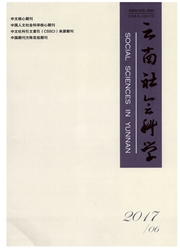

 中文摘要:
中文摘要:
近年来,通过我们的反复调查与分析,逐步证实了如下一些带根本性的结论:其一,喀斯特山区在我国西南地带分布虽说十分辽阔,但其间具有明显的类型差异,不同类型的喀斯特山区,其支持的生态系统也互有区别,酿成石漠化灾变的难易程度也互有区别,灾变酿成后的生态恢复对策也应当有所不同。其二,不同类型的喀斯特山区,以及所支撑的生态系统在历史的进程中,哪些民族长期定居,其文化对所处的自然与生态系统的适应水平也各不相同,因而一旦呈现石漠化灾变后,值得借用的本土生态知识、技术与技能也必然分属于不同的民族,需要区别对待,不可一概而论。其三,长期适应于特定喀斯特生态系统的民族,其文化必然高度适应于其所处的自然与生态系统。进而认为在石漠化灾变区实施生态恢复过程中,该区域相关民族的知识、技术和技能可以在其间发挥关键性的作用,其应用价值具有不可替代性。
 英文摘要:
英文摘要:
In recent years, repeated surveys and analysis have made us gradually confirmed with the follow- ing fundamental conclusion: First, although karst mountainous areas in the southwest of China are distributed ex- tensively, there are obvious differences in terms of type. In different types of karst mountainous areas, the eco- system varies from one to another. As a result, it has created different difficulty degrees for rocky desertification and different countermeasures for restoration strategies. Second, in the course of historical development, different types of karst mountainous areas and their supported ecosystem will experience different change because of the people who settle there with their own cultural patterns for a long time, adapted to the natural and ecological sys- tem. Thus, once there appears rocky desertifieation, the knowledge, skill and technics for restoration will be dif- ferent based on different patterns for living. There is no one simple approach that can be applied to all the situa- tions. Third, people who are adapted to the specific karst ecosystem for a long time have their own culture highly adapted to that very natural ecosystem that they are in. Therefore, in the process of ecological restoration in rock- y desertification, the knowledge, technology and skills of the local nation will not be the same but they will play a pivotal role, the applicable value of which is irreplaceable.
 同期刊论文项目
同期刊论文项目
 同项目期刊论文
同项目期刊论文
 期刊信息
期刊信息
